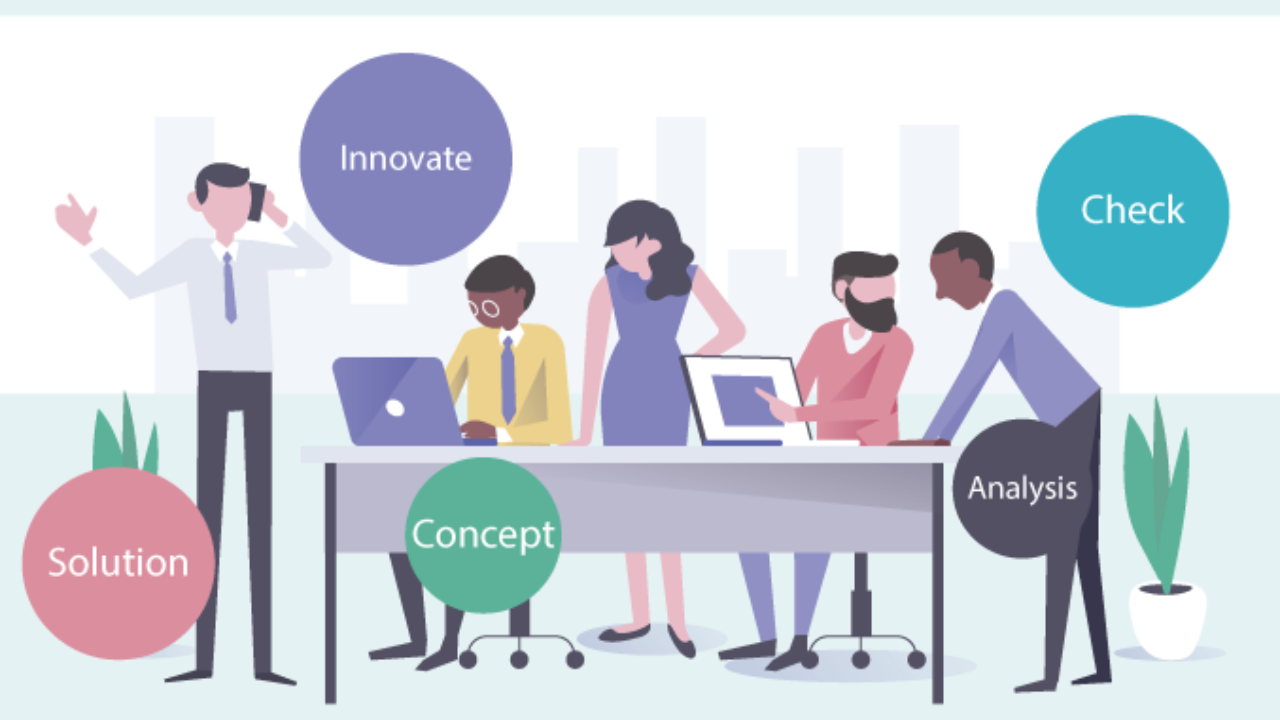
Although successful logos look very simple visually, the process of creating a custom logo design is opposite enough. Designing a logo is a time-taking project with multiple phases of development needed to create a powerful final product. Though, the investment is worthwhile. When the process is successfully executed, the resulting logo becomes a valuable asset for the business’s marketing efforts.
9 steps of creating an exceptional custom logo design
Consider these nine steps involved in the process of designing an exceptional logo that will make you and your business successful.
Step 1: The design brief
In the first step, understand the goals and values of the individual, business, or organization. You need to put lots of effort into building the target audience.
For the service or product, it should be directed to specifically someone. Otherwise, it is directed to no one. It is a commodity, and for the client, it is the price that distinguishes it from the competition. When you communicate to some particular group, you stand a chance to create a successful message of marketing, with which the audience will compare and identify.
A target group is sometimes quite obvious. For example, if the product is costly and takes a meaningful time to make, you will identify and target people who are able to afford it.
Moreover, every business has an ideal customer that brings in a high profit at the minimum expense in terms of support time, cost, etc. Identifying this group as well as focusing on it is priceless.
Another way of thinking about it is to answer a question. In case it turned out that your logo most resonates with a group of people, a segment of the population, with whom you will like it to resonate? Which group of people will make you most content and raise hope for your brand’s great future?
Lots of information should be collected at this. Is there an existing style or color scheme established? Is there any choice for the visual aesthetic? In some situations, a new custom logo design may be a chance to fresh start and build a brand new visual identity. While in other situations, it may be essential to maintain some consistency.
Step 2: Research and discovery
Once you have gathered the general information, delve deep into the research phase. In regards to branding, where the business is currently? Investigate its collateral such as catalogs, stationery, reports, websites, and social profiles.
Successful logos can allude to many things. Creating potential themes can benefit the process, offering more material to utilize later when brainstorming and sketching.
Perform research on the market, its niche, current trends, history, the company, as well as its competition. What is working well for the competition? If they are not doing good things, establish something to avoid in helping your design to succeed.
Identifying keywords relevant to the company and its service or product is even a common practice at this point in the creative process. They are helpful in the brainstorming stage as well.
Gather inspirational materials, appealing shapes, visual iconography, reference image in a form of the mood board.
Step 3: Brainstorming
Brainstorm your ideas based on all the materials and information you have gathered. An effective method is to pursue quantity, not quality. Nothing needs to be criticized. Many ideas should be produced, and all possible paths discovered.
Use different brainstorming methods and formats of collecting the ideas. Here, lateral thinking and mind mapping play an essential role. In the process, also extend the mood board and list of keywords.
Step 4: Conceptualizing and sketching
Now, it is time to conceptualize the ideas from the brainstorming stage. Sketching the ideas on paper is an important step that allows us to slow down and analyze all possible directions and angles. It is essential to start on paper because such sketches are much quicker to create as compared to a computer and result in a huge amount of various concepts. x
Sketch using different types of pencils, paper, and special pens, like a parallel pen for custom calligraphy that is used in the design of logotypes and sophisticated lettering.
The sketches are printed, scanned, enlarged, and redrawn, to refine them. They are augmented with grids and balancing lines that are being drawn to perfectly align the things.
Finally, go for the promising sketches for further refinement.
Step 5: Draft production
The successful ideas developed during the sketching stage are recreated on the computer. Usually, digital implementation is executed by using Adobe Illustrator.
The ideas are given a fresh perspective when they can be noticed on screen. It allows us to see any quick concerns that may have been ignored in the sketch.
The drafts are redrawn again and printed out to look at them from different angles and refine them further. Before you apply colors to any design, consider the custom logo design in monotone white and black shades. An excellent logo must be able to appear well in any format and output.
Then, start implementing with colors. Many selected color palettes are integrated into the design, only to look what feels like the powerful approach. This part of the logo process involves several comparison prints where they are considered on one page.
Step 6: Step back
At this point, it will be great to step back from the project for a short period. This break acts as a reflection time, providing the designer with a chance to go back to the project with a fresh viewpoint. This may even be a great opportunity to collect feedback from an unbiased outside party. Creating a logo design is a very involved process. Thus, getting insight from an extra pair of eyes is highly advantageous. After returning to the designs, iterations must be selected and assembled for presentation.
Step 7: Presentation to the customer
Finally, choose the perfect concepts, usually three, and then prepare them for the customer. The bigger the choice, the harder it is for the customer to make a decision. Many studies showed that it is based on psychology.
Prepare mockups such as design rendering on vehicle wraps or uniforms. This helps the customer visualize their custom logo design in a setting “real world”, and make a good decision when selecting a concept.
Step 8: Customer feedback and refinements
Based on the discussion and feedback of the customers, develop and tweak a selected concept. Provide unlimited changes until the customer is absolutely happy.
Basically, go through #3 and #8 steps until the customer is satisfied.
Step 9: Delivery
Once the customer is contented with the resulting logo, then the logo enters into its final process of refining. First of all, it is pixel-perfected, and then it is prepared to print. Both are complicated and time-taking processes. Usually, their effects are not visible to the naked eye, but really important to ensure the logo can be scaled without boundaries used on any background, in any subsequent process, and it can be printed out without problems. The logo must look great equally on a billboard, t-shirt, car wrap, and business card.
Then the final files are prepared and exported as well. The set of formats offered is designed to cover all the needs of customers for offline and online use of logos. That is on social media profiles, websites, and in print. The Adobe Illustrator vector file can be used in any branding or marketing graphic design project.



